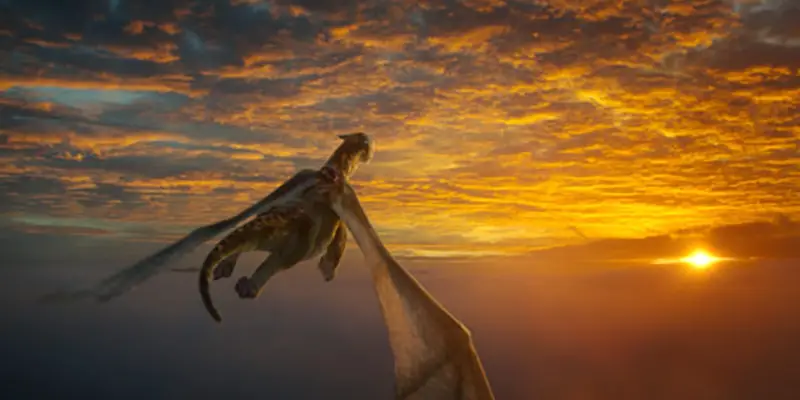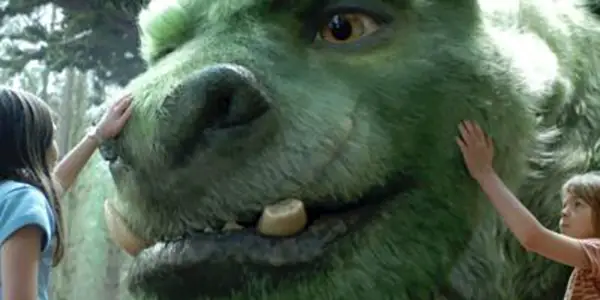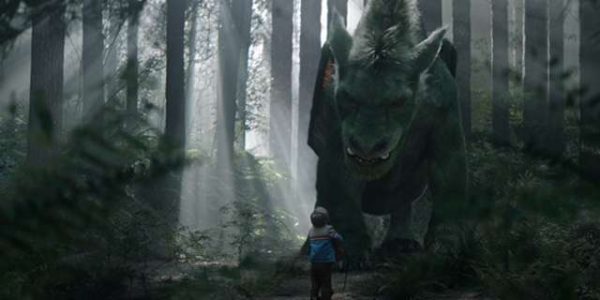PETE’S DRAGON: Retaining Innocence

A bi-product of passion and experimentation gone wrong, Mike has…
If you’ve ever wondered why fantasy has always been a popular genre in fiction, it might help knowing that all fiction is a form of fantasy, and that stories are a type of self-preservation. Take Martin Scorsese’s wildly entertaining and greatly underappreciated Shutter Island, in which the main character, Teddy, is on a mission to prove he is innocent, only for the truth to reveal that he is anything but. As Teddy becomes fully aware, he finds out that he has created an elaborate fantasy, a hyper-fiction as a ruse to shield himself from the harsh reality.
This may be a key to understanding why certain genres are as popular today as they were in ancient times. The fantastical is a specific sort of archetypal band-aid that conveys a visual metaphor of help in the process of recovering from pain, suffering and tragedy. Though a made-up story does nothing to actually heal, it has the power to create a facade that can cover up open wounds and help us forget that there is a problem. Fiction veritably fashions a sense of security.
Pete’s Dragon, a loosely-based remake of Disney’s 1977 live-action hybrid, takes this notion of fantasy as preservation of innocence and makes it the focal point of the film. Calamity is universally experienced by everyone, though in different ways, and we all create personal narratives that frame us as victims in life’s grand conspiracy of illogical agony. The film treats intentional fallacies as mentors and protectors of the innocence that may still reside within us, after years of trauma and inherent destructive tendencies have virtually cut it down.
Dragon Heart
Never specifically stated, Pete’s Dragon takes place between the late 1970s and early 1980s in an undisclosed forest somewhere in the Pacific Northwest. A young boy named Pete (Oakes Fegley) is on a family vacation when his parents are killed in a freak accident. Stranded alone in the wilderness, Pete ventures off into the forest and by chance meets Elliot, a green and furry dragon that takes Pete under his wing to be his protector and surrogate parent.
The plot of this 2016 movie is similar to one theme of the 1977 original, but there’s really no other narrative connection. In both films, Pete is an orphaned boy in need of a home, but that’s about it. This new version swaps the singing and dancing numbers for dramatic, self-aware songs that play over certain sections of the film as a means of relaying internal characters’ thoughts and emotions. There’s no villainous gang of nincompoops out to capture Elliot, either, which is a great improvement.
In the 1977 movie, Elliot was hand-animated over the live-action, to mediocre success. He was a silly and lovable goofball, with a nappy haircut similar to Pete’s. In this version, Elliot is a massive CGI creation that works wonders for the film. He doesn’t speak words, but communicates through his booming animal calls and sounds. What really sells the mechanics of Elliot are his eyes; deep and soulful, they emanate the tender heart of the monster, and make the movie soar on currents of tenderness.

After six years of living in the wild, Pete stumbles upon other humans. He’s introduced to the wise sage, Meacham (Robert Redford), who narrates over the film, giving the fictional world its own mythos and legendary framework. Meacham is the father of Grace (Bryce Dallas Howard), a local sheriff who is engaged to Jack (Wes Bentley), who runs the local timber yard with his brother, Gavin (Karl Urban).
It’s Grace who meets Pete in his primitive state, and there is an instant connection between the two. We get the sense that she might not be able to have children of her own, though she will be getting Jack’s daughter, Natatlie (Oona Laurence), in the marriage contract. The chemistry between Pete and Grace is as natural as any onscreen couple, and they both sell the parts equally. Really, the entire cast does a great job at giving believability to their characters, and it rounds out the picture nicely.
Even Gavin, who fits the antagonist shoes here, really isn’t a classic Disney villain as one would expect, but someone who misunderstands what is transpiring around him and has to create a story that explains what he doesn’t comprehend. The characters feel like real people who come from different walks of life, and their conflict is born out of linguistic shortcomings.
Tale of Tails
Director David Lowery and screenwriter Toby Halbrooks have taken the wonderment of telling fiction in Pete’s Dragon and given it a perspective that most films don’t possess. They are interested in the uniqueness of stories and how they define every aspect of our lives.
As previously stated, Meacham bookends Pete’s Dragon with a voiceover, recalling to the locals in the town of an encounter he had with Elliot some years ago. Nobody believes him, but it doesn’t matter, because what Lowery has set up is the unreliable narrator device. In this case, there is dramatic irony because the viewers know to a point that he is telling the truth, but the characters don’t. What we all come to learn in a fourth wall break is that Meacham isn’t telling the truth to anybody, but has intentionally lied to cover up what really happened. In this light, Meacham has framed his own innocence as sectors, for the truth is also just a type of narrative spin.

Meacham isn’t the only one who tells stories in Pete’s Dragon. Pete and Elliot read a bedtime story together and it bonds them. When Pete goes home with Grace and Jack, we learn that they read the same story to Grace when she was younger. Gavin tells a yarn to himself because life has become unmanageable and he needs to see it through to what he considers a logical end. Stories tell the idea that people only see what they want, and thus they’ve learned it from other fiction.
Every part of our lives is a story; we exist by and through them. We only understand the nature of things by the beginning, middle, and ends of story. Escapism isn’t a shield because reality isn’t good enough, it’s a shield because that’s all that there is. We don’t remember every day, but we remember stories that happened in them. It isn’t morally wrong that reality is make believe; we had to convince ourselves that there was something else through a differing story.
Elliot is the manifestion of fiction, and like all good fiction, it rewards with comfort and reaffirmation. It needs us and we need him.
Summation
Pete’s Dragon is yet another of the recent Disney live-action remakes that elevates the source material and expands the world it was born from for the better. Perhaps this is the best of the bunch. But no matter if it is or not, it has enough emotional lift and intellectual strength to warm the cold and the lonely through the sheer power of being a fantasy.
What do you find most appealing in a movie, an emotional connection or smart storytelling?
Pete’s Dragon is playing in the U.S. and U.K. Find international release dates here.
Does content like this matter to you?
Become a Member and support film journalism. Unlock access to all of Film Inquiry`s great articles. Join a community of like-minded readers who are passionate about cinema - get access to our private members Network, give back to independent filmmakers, and more.
A bi-product of passion and experimentation gone wrong, Mike has spent most of his time in the field couch surfing and growing a comb-over. Several of his favorite films are Rashomon, Vertigo, Apocalypse Now, and The Naked Gun.













